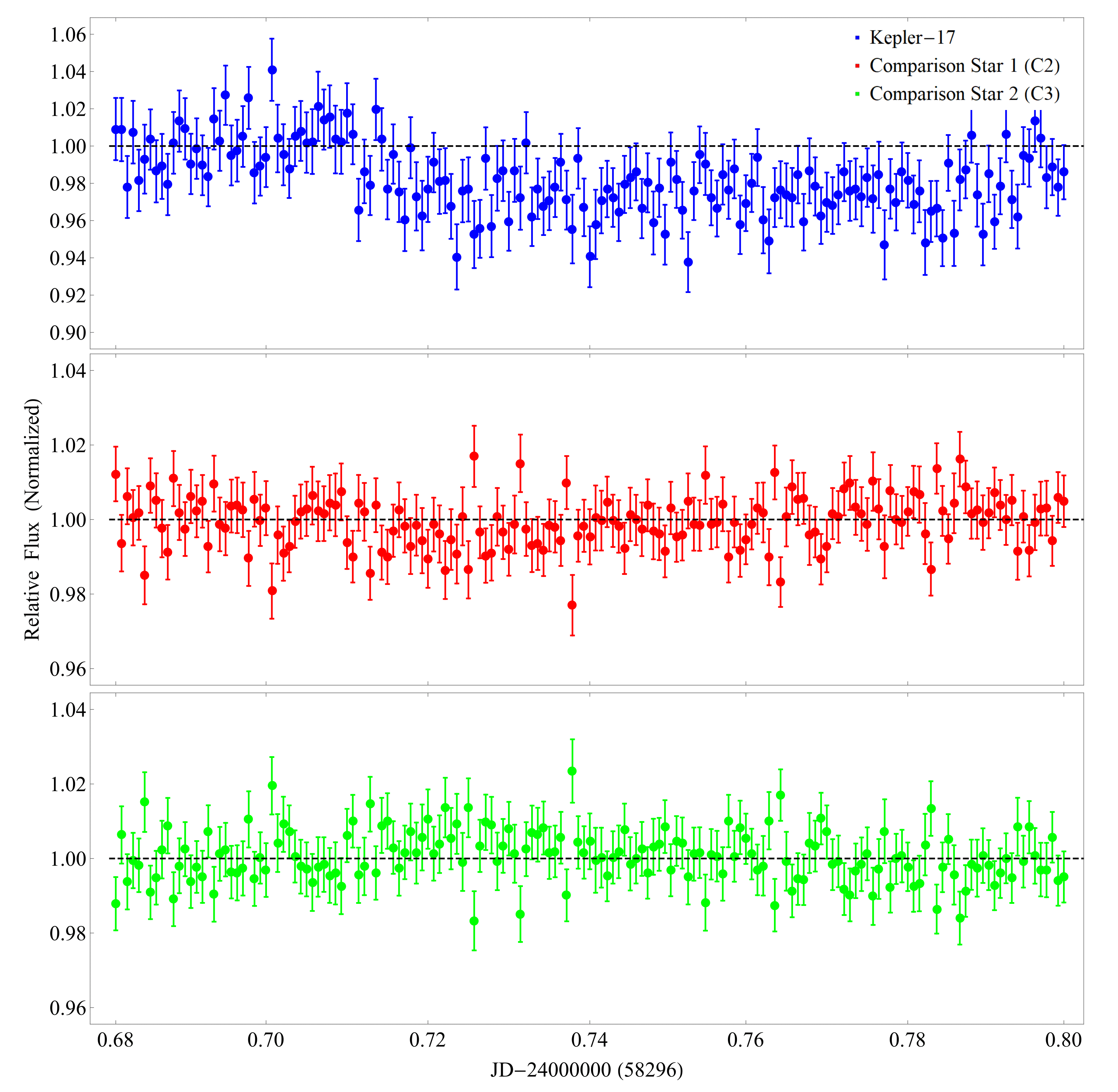Exoplanet Detection Via Transit Photometry Using the Great Basin Observatory
Published in Nevada State Undergraduate Research Journal, 2019
Recommended citation: G. Panelli. Exoplanet Detection Via Transit Photometry Using the Great Basin Observatory. Nevada State Undergraduate Research Journal.V5:I1 Spring-2019. (2019). doi:10.15629/6.7.8.7.5_5-1_S-2019_4..
 Exoplanet detection via transit photometry has blossomed into one of the most fruitful fields in all of physics in the last decade with NASA missions like Kepler. We conducted transit photometry on the star Kepler-17, known host to exoplanet Kepler-17b, on June 26, 2018 using the Great Basin Observatory in an effort to perform the one of the first exoplanet detections in the telescope’s 2-year history. We also gauge the lower limits of host star brightness for which the 0.7-meter telescope retains sensitivity and establish a transit depth threshold for detection confidence. We present evidence for detection of Kepler-17b, estimates of its radius, semimajor axis and orbital period, as well as a transit depth minimum for GBO detection.
Exoplanet detection via transit photometry has blossomed into one of the most fruitful fields in all of physics in the last decade with NASA missions like Kepler. We conducted transit photometry on the star Kepler-17, known host to exoplanet Kepler-17b, on June 26, 2018 using the Great Basin Observatory in an effort to perform the one of the first exoplanet detections in the telescope’s 2-year history. We also gauge the lower limits of host star brightness for which the 0.7-meter telescope retains sensitivity and establish a transit depth threshold for detection confidence. We present evidence for detection of Kepler-17b, estimates of its radius, semimajor axis and orbital period, as well as a transit depth minimum for GBO detection.
